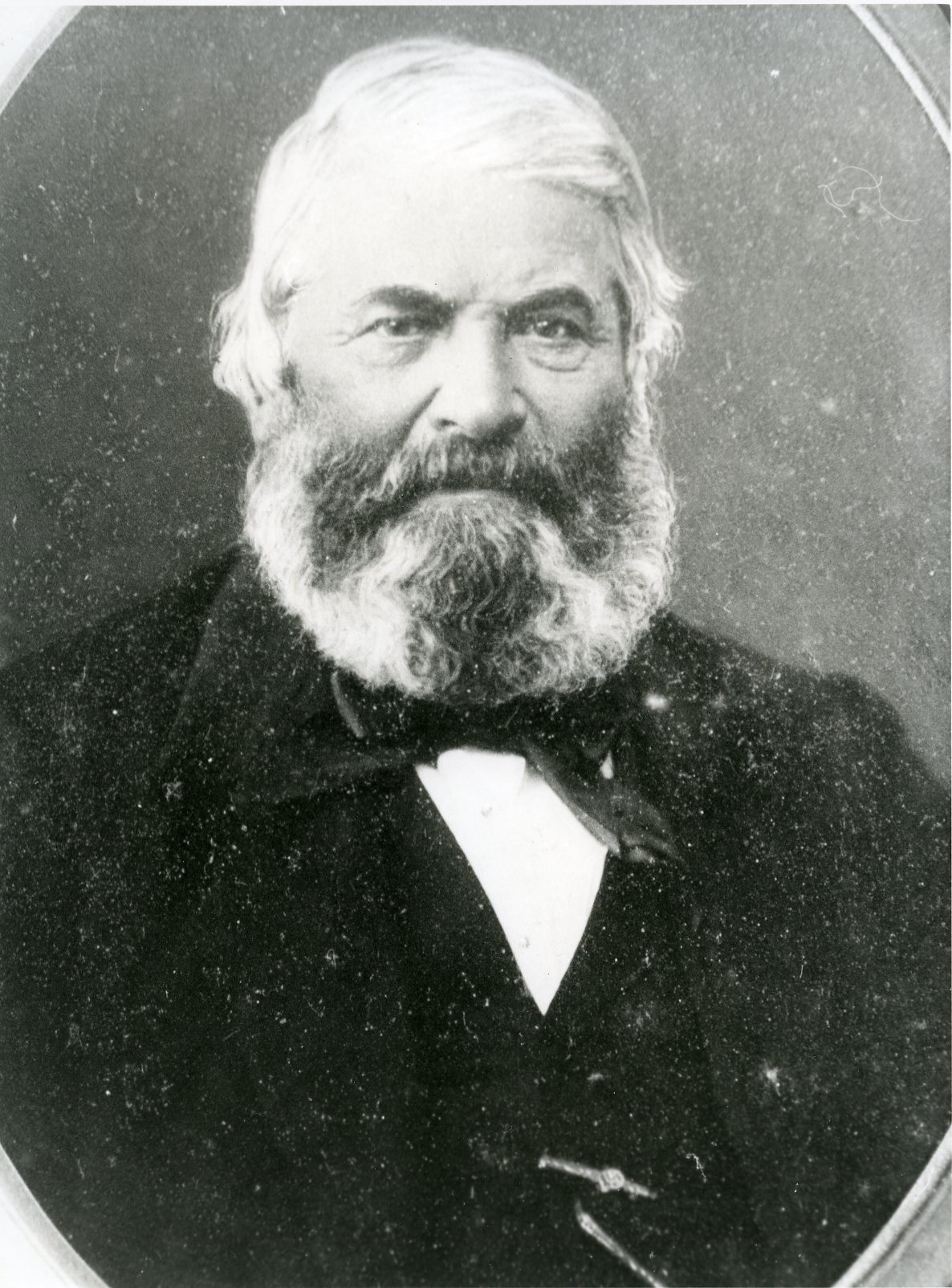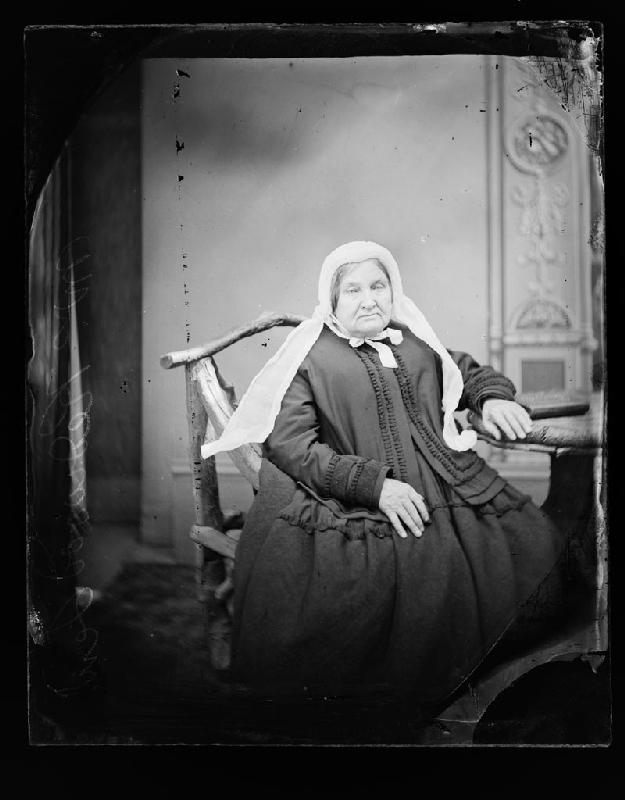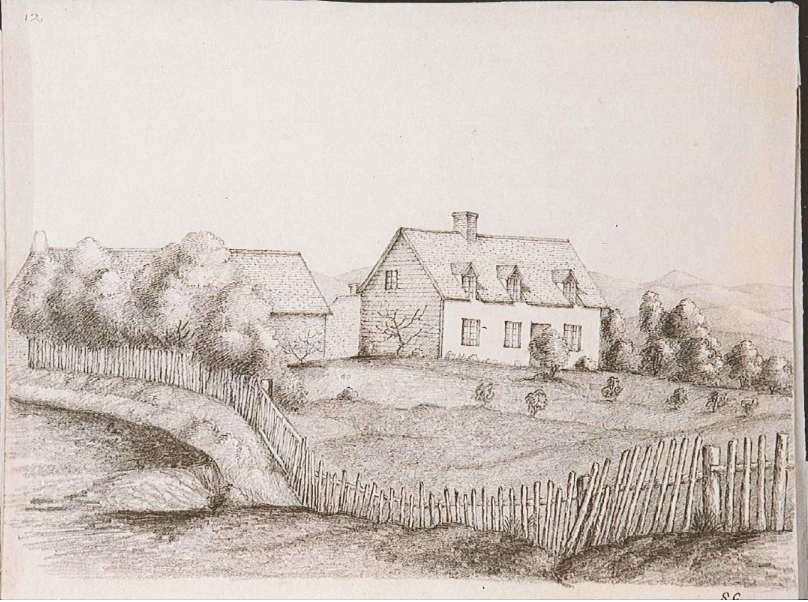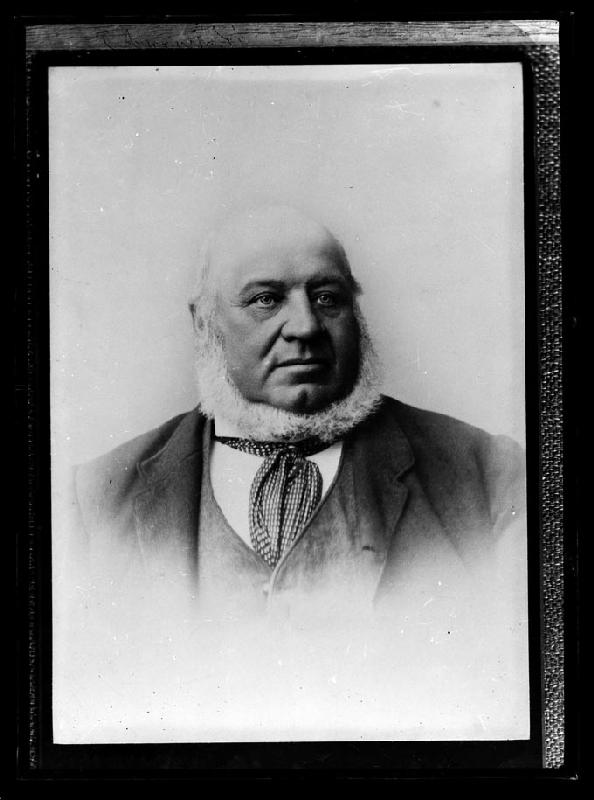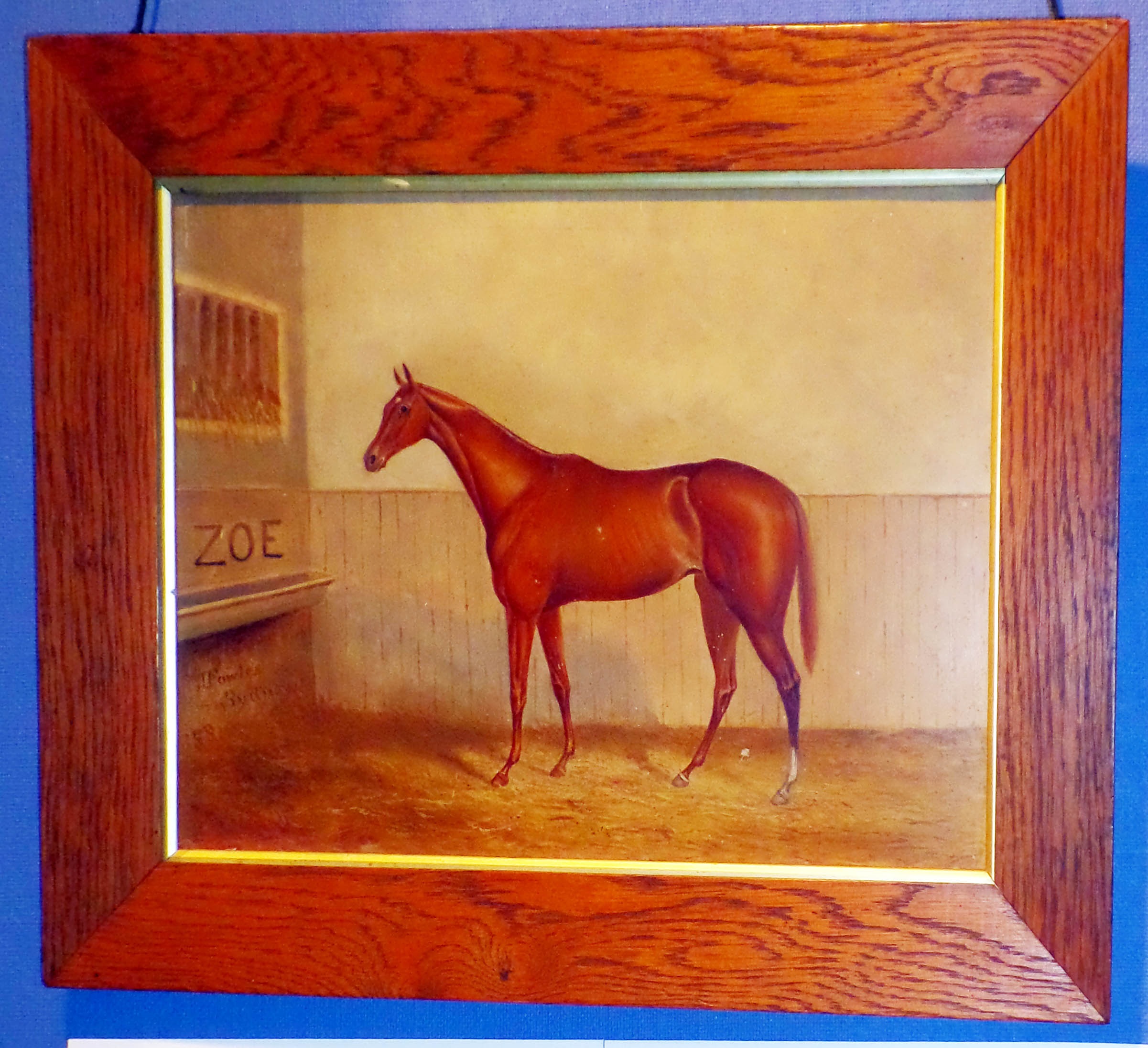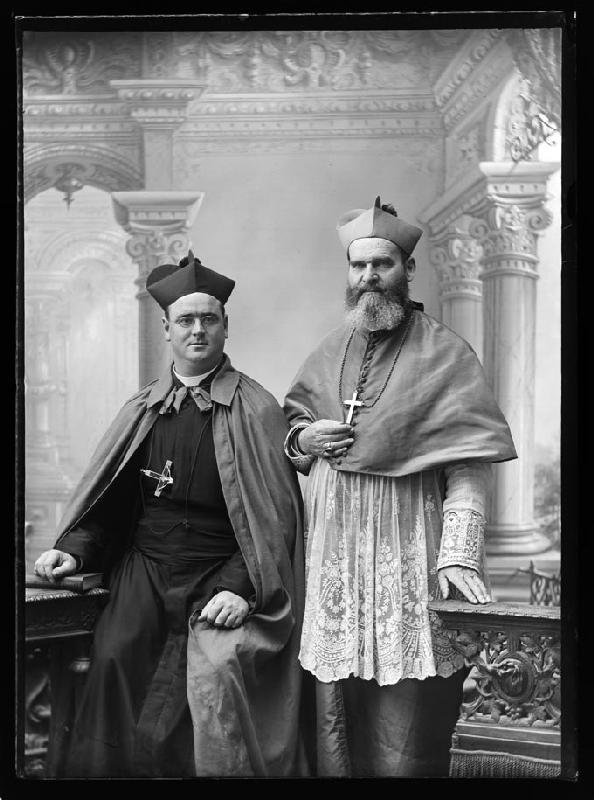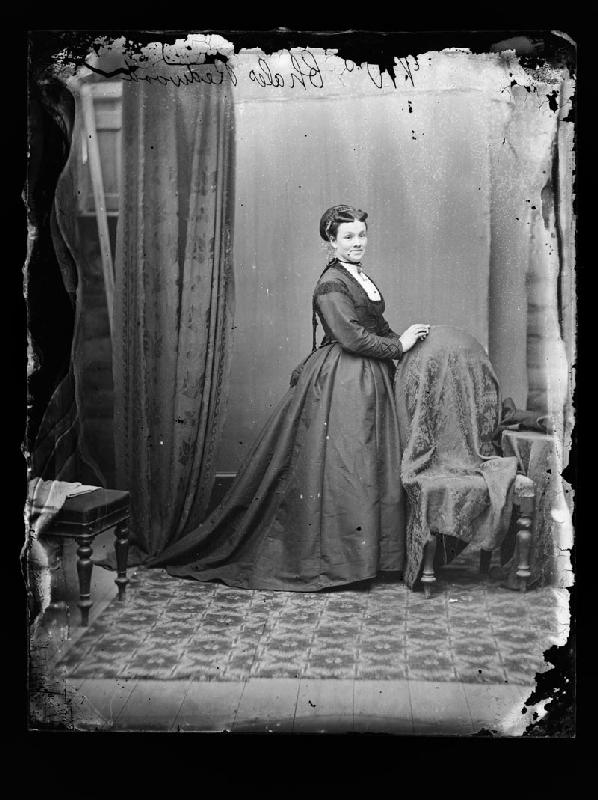The Redwood Family
Farming, Racing and the Church Henry Redwood and early settlement The Redwood family is remembered through place names in Nelson, Marlborough, and throughout New Zealand.
Farming, Racing and the Church
Henry Redwood and early settlement
The Redwood family is remembered through place names in Nelson, Marlborough, and throughout New Zealand.
It all began with Henry Redwood and his wife Mary (Gilbert), who sailed to New Zealand, both aged 48, on the George Fyfe with their children1, arriving in Nelson in December 1842. The Redwoods had been tenant farmers on the Clifford estate in Staffordshire for several generations.2 Sir Charles Clifford also immigrated to NZ on the George Fyfe and settled in Marlborough.3
Eldest daughter, Martha, was also on the voyage with her new husband, Joseph Ward and was very unwell for much of the voyage. Joseph wrote of the conditions during the voyage: “Bad living, bad health- very bad tempers……Talk of suffering.” 4 Martha and Joseph, who was a surveyor, were to have 12 children.5
On arrival, Henry senior erected a large 60 foot long tent divided into compartments for his family of four daughters and four sons. Soon after arriving in Nelson, on the George Fyfe on 2 January 1843, Fanny Dillon gave birth to her first child with a kindly neighbouring tent dweller, Mrs Redwood, assisting the ship's surgeon.6
The Redwoods spent the first six months of life under canvas at their Waimea West section while their two story mud cob home, Stafford Place, was built. It was replaced by a two story wooden house two years later.7 They were soon supplying the Nelson market with beef, mutton and butter. Henry established a butchery on his Town Acre (no. 167) on the south-east corner of Trafalgar and Bridge Streets, which was run by his eldest son Henry from 1845-1847.8
In January 1845, the family provided a grand social event: a triple wedding was held with Mary Redwood marrying a solicitor, Joseph Greaves, Henry Jnr marrying a widow, Elizabeth Reeves, and Elizabeth Redwood marrying Edward Bolton.9
Henry Redwood Jnr and his father shared an interest in horses and in 1849, a new house Hednesford, was built for him on the family property- where it still stands today. Father and son imported a large number of thoroughbred racehorses from England and Australia and the Redwood Stables were built alongside Henry Jnr's house made with bricks from their own kiln. The bricks and heritage listed floor, have been reconstructed into the Stables Tavern and Restaurant in Richmond.10
In the 1850s, when youngest son Francis came home from studying at Father Antoine Garin’s seminary to help on the farm, he noted: “The early years are crammed with the practical details of farming; the chopping of stakes, planting potatoes, the bulling of heifers, the slaughtering of sheep and pigs, the pupping of bitches, the castrating ("cutting") of male calves, milking cows in the rain, building a malthouse, making bricks, brewing beer, getting a boat (tub) across the river with ropes and pulley, and getting in the harvest. Tall, golden grain…I did my share, half an acre a day.” 11
Religion played a major role in the Redwood story. It is reported that Henry and Mary separately converted to Catholicism and that their religion and a lack of land may have played a large part in their decision to emigrate to New Zealand.12 Henry Senior nearly went to Tasmania when he found there were no regular masses celebrated in Nelson.13 Nelson’s first Catholic Mass was said at the Redwoods’ home on May 5 1844.14
While the family prospered in Nelson, they also saw opportunities over the hill in the Wairau. Henry was granted a depasturage licence for The Bluffs Run on Marlborough’s East Coast and son Thomas Redwood established a homestead near the Vernon Lagoons. Another son, Charles established himself on a property at Riverlands in Marlborough, where his mother Mary died in 1879.15
When Henry died aged 79 in 1873, his obituary described him as man of great vigour ‘both of body and mind’, who had devoted 30 years in New Zealand to agricultural and pastoral pursuits, adding value and acreage to his land. “He who had been a tenant-farmer in England under the family of the Clifford Constables, found himself ‘seized’…of a greater number of acres of land than were owned in England by the wealthy squires to whom he used to pay rent.” 16
Father of New Zealand Turf - Henry Junior
Henry Junior was 19 when the family arrived in New Zealand. His interest and dedication to breeding thoroughbred racehorses became legendary. In 1853-4, he imported 20 thoroughbred mares and seven stallions.17 The Redwood Stables were built in 1851 and land at Rabbit Island was used for training horses.
Henry Jr. became interested in the potential of the Wairau Plains for grain crops and moved to a property in Spring Creek in 1865. As well as establishing a flour mill there, he increased his reputation as a breeder and trainer of bloodstock, becoming known as the “Father of the New Zealand Turf”.18 The Examiner noted in 1866, "Mr Redwood's stud is outstanding. No gentleman has a finer lot of brood mares south of the Line…... He has as valuable a stud as could be found in any British colony."19
Francis Redwood - son for the Church
Francis Redwood was to become New Zealand’s first homegrown Catholic archbishop. When Father Antoine Garin came to Nelson in 1850 he saw Francis's potential. In December 1854, after expressing a strong desire to be a priest, he was sent to France for further education. He studied and taught in France and Ireland and didn’t return to New Zealand for another 20 years.20
Francis became Archbishop of Wellington in 1874 and New Zealand’s senior bishop in 1895. In 1924, tens of thousands of Wellingtonians came out to see the pomp and ceremony of the jubilee celebrations of New Zealand, and the world’s longest serving Catholic bishop.
"Never before has Wellington witnessed such a religious procession," The Evening Post said."It provided a unique opportunity of witnessing a Catholic religious pageant in all its majesty and solemn glory. Along the whole route every vantage point was occupied, and the many colours reflecting the bright rays of the brilliant sunshine made up a radiant sight, which was wonderful to behold."21
Archbishop Redwood was popular among Catholics and non-Catholics alike for the stately way he conducted himself and by his balanced views and his eloquence both in the pulpit and on the platform. When he died on 3 January 1935 his life had spanned the Catholic Church’s transition from a missionary church to an established institution in New Zealand.22
Thomas and Charles Redwood
Eventually Charles and Thomas ended up living in the Wairau. Nelle Scanlan remembered the early Blenheim Catholic Parish in ‘the beautiful old church…The Tom Redwoods were on the right and the Charlie Redwoods on the left.” 23
Thomas drove 2000 sheep from Nelson to the Bluffs’ Run (later known as Vernon) via the Tophouse route.24 He managed Bankhouse Station and the Vernon Run in the Wairau. Early in the 1870s, he bought “Burleigh” and lived on the estate for twenty-three years. He then farmed “Woodbourne,” an area of 1200 acres, near Renwick, and the Omaka Reserve. He was also secretary to the Marlborough Racing Committee, and owned horses, with which he won many races.25 Blenheim’s Cob Cottage was possibly built for Charles Redwood. Having housed members of the Redwood family and a succession of farm labourers, it served as a local schoolroom from 1906 to 1909.26
A 1912 Marlborough Express obituary for Charles’ wife (no first name noted), Mrs Redwood, describes her as being an ‘ideal hostess’ and said that her ‘unselfishness and usefulness will be missed’ particularly regarding her charitable works for the Catholic Church. She was survived by Charles and 12 out of their 15 children. The Charles Redwood family moved to Toowoomba Queensland in about 1896.27
2017
Updated August 2020
Story by: Joy Stephens
Sources
- Mary Redwood. Passenger details, George Fyfe. Early Settlers Database:
http://www.museumnp.org.nz/early-settlers/passengerDetails.aspx?passengerId=2360 - Lash, Max D. (1992). Nelson notables 1840 - 1940: A dictionary of regional biography. Nelson, New Zealand: Nelson Historical Society., p.120-1.
https://www.worldcat.org/title/nelson-notables-1840-1940-a-dictionary-of-regional-biography/oclc/29497366 - Stephens, J. (2009) Early Pastoralism in Marlborough. The Prow
- Neale, J. (1982) Pioneer Passengers. Nelson, N.Z. : Anchor Press, p 71
- Orr, K.W. 'Ward, Joseph', from the Dictionary of New Zealand Biography. Te Ara - the Encyclopedia of New Zealand:
http://www.TeAra.govt.nz/en/biographies/1w7/ward-joseph - Allan, R. (1965). Nelson: A history of early settlement. Wellington, New Zealand: A.H. and A.W. Reed.,p 208
- Stafford Place in Nelson New Zealand:
- Lash, p 120-121.
- Neale, p 79
- Nelson Historical Society Newsletter, March 2017
- Dickinson, M. (1981) The Redwood Stables. Journal of the Nelson and Marlborough Historical Societies 1(1)
http://nzetc.victoria.ac.nz/tm/scholarly/tei-NHSJ04_01-t1-body1-d12.html - Henry Redwood (1794 - abt. 1873) on WikiTree
https://www.wikitree.com/wiki/Redwood-58 - Dickinson
- Goodison, A (2010) Nelson's early churches. The Prow
- Lash, p 120-121.
- The late Mr Henry Redwood (1873, June 28) Nelson Examiner & New Zealand Chronicle
https://paperspast.natlib.govt.nz/newspapers/NENZC18730628.2.11 - Neale, p 80.
- Dickinson
- Broadbent, J.V. 'Redwood, Francis William', from the Dictionary of New Zealand Biography. Te Ara - the Encyclopedia of New Zealand
http://www.teara.govt.nz/en/biographies/2r6/redwood-francis-william - O'Neill, A (2015, June 17) Archbishop Redwood's jubilee draws crowd of thousands - 150 years of news. Retrieved from Stuff:
http://www.stuff.co.nz/dominion-post/news/69429232/archbishop-redwoods-jubilee-draws-crowd-of-thousands--150-years-of-news - The most Rev. Francis Redwood (1897) The Cyclopedia of New Zealand [Wellington Provincial District]. Retrieved from NZETC:
http://nzetc.victoria.ac.nz/tm/scholarly/tei-Cyc01Cycl-t1-body-d4-d22-d29.html - Broadbent
- Cahill, P.P. (1964) St Mary’s Parish Blenheim 1864-1946. Wellington, N.Z.: John Milne Ltd p 58
- Holdaway, Barry (2016) The Wairau and its forgotten capital [Blenheim, N.Z.] : p 45
- Mr Thomas Redwood (1906) The Cyclopedia of New Zealand [Nelson, Marlborough & Westland Provincial Districts]. Retrieved from NZETC:
http://nzetc.victoria.ac.nz/tm/scholarly/tei-Cyc05Cycl-t1-body1-d2-d23-d23.html - Donovan, D. (2011, April 15) Marlborough: Cob cottage a perfect picture of the past. Retrieved from nzherald.co.nz:
http://www.nzherald.co.nz/travel/news/article.cfm?c_id=7&objectid=10718738 - The late Mrs Charles Redwood (1912. December 3) Marlborough Express, p.3
https://paperspast.natlib.govt.nz/newspapers/MEX19121203.2.
Further Sources
Books
Henry Redwood senior
- Allan, R. (1965). Nelson: A history of early settlement. Wellington, New Zealand: A.H. and A.W. Reed., p. 208-9
http://www.worldcat.org/oclc/8650658 - Broad, L. (1892) The jubilee history of Nelson, Nelson, N.Z.: Bond, Finney & Co.
http://nzetc.victoria.ac.nz//tm/scholarly/tei-LowJubi-t1-body1-d13.html - Lash, Max D. (1992). Nelson notables 1840 - 1940: A dictionary of regional biography. Nelson, New Zealand: Nelson Historical Society, p.120-1.
http://www.worldcat.org/oclc/29497366 - Neale, J. (1982) Pioneer Passengers. Nelson, N.Z. : Anchor Press, pp 69,72,76, 79
http://www.worldcat.org/oclc/35763493
Henry Redwood junior
- Allan, R. (1965). Nelson: A history of early settlement. Wellington, New Zealand: A.H. and A.W. Reed., p. 208-9
http://www.worldcat.org/oclc/8650658 - Broad, L. (1892) The jubilee history of Nelson, Nelson, N.Z.: Bond, Finney & Co.
http://nzetc.victoria.ac.nz//tm/scholarly/tei-LowJubi-t1-body1-d13.html - Cahill, P.P., [1964] St Mary’s Parish Blenheim 1864-1946. Wellington, N.Z.: John Milne Ltd p 19, 26
http://www.worldcat.org/oclc/154727707 - Costello, J. and Finnegan, P. (1988) Tapestry of Turf: the History of New Zealand racing 1840-1987 Auckland, N.Z. Moa Publications. p 87
http://www.worldcat.org/oclc/25965190 - The Cyclopedia of New Zealand [Nelson, Marlborough & Westland Provincial Districts] Marlborough Provincial District - The Marlborough Land District (published 1906) p 368,373
- Brooks, C et al (comp) (2011) Marlborough: celebrating 150 years Blenheim, N.Z.: The Marlborough District Council p 201.
http://www.worldcat.org/oclc/795124869 - Horrocks, S. (1984) Historic Nelson. Nelson [N.Z.] :S. Horrocks and B. de Butts, p.25
http://www.worldcat.org/oclc/45791554 - Lash, Max D. (1992). Nelson notables 1840 - 1940: A dictionary of regional biography. Nelson, New Zealand: Nelson Historical Society., p.120- https://www.worldcat.org/title/nelson-notables-1840-1940-a-dictionary-of-regional-biography/oclc/29497366
- McAloon, Jim. (1997) Nelson: A regional history. Whatamango Bay, N.Z.:Cape Catley Ltd, p.56
http://www.worldcat.org/oclc/50310188 - McDonald, C. A. Pages from the past: some chapters in the history of Marlborough. Blenheim: N.Z.: H. Duckworth (E. H. Penny & Co.) p 257.
- McIntosh, A. D.(ed) (1977) Marlborough: a provincial history Christchurch, N.Z. : Capper Press p 350.
http://www.worldcat.org/oclc/859420092 - Neale, J. (1982) Pioneer Passengers. Nelson, N.Z. : Anchor Press, pp69,72,79
http://www.worldcat.org/oclc/35763493 - Redwood, M. (1979) Proud silk: a New Zealand racing history. Wellington : A. H. & A. W. Reed.
http://www.worldcat.org/oclc/6734743
Archbishop Francis Redwood (son of Henry and Mary)
- The most Rev. Francis Redwood (1897) The Cyclopedia of New Zealand [Wellington Provincial District]. Retrieved from NZETC:
http://nzetc.victoria.ac.nz/tm/scholarly/tei-Cyc01Cycl-t1-body-d4-d22-d29.html - Redwood, F. (1922) Reminiscences of early days in New Zealand. Wellington: C.M. Banks
http://www.worldcat.org/oclc/229382220 - Simmons, N. A. (1981) Archbishop Francis Redwood: his contribution to Catholicism in New Zealand. MA thesis, Massey University
http://www.worldcat.org/oclc/155256165
Thomas and Charles Redwood (sons of Henry and Mary)
- Cahill, P.P., [1964] St Mary’s Parish Blenheim 1864-1946 Wellington, N.Z.: John Milne Ltd p 17, 43
- The Cyclopedia of New Zealand [Nelson, Marlborough & Westland Provincial Districts] Marlborough Provincial District - The Marlborough Land District (published 1906) p. 368-9
- Insull, H.A.H.(1952) Marlborough Place Names Wellington, N.Z.: A. H. & A. W. Reed p 59
http://www.worldcat.org/oclc/768631213 - McIntosh, A. D. (ed) (1977) Marlborough: a provincial history Christchurch, N.Z. : Capper Press p 3
Wilfred Henry Redwood (Boer War) and Henry Francis Redwood
- The Cyclopedia of New Zealand [Nelson, Marlborough & Westland Provincial Districts] Marlborough Provincial District - The Marlborough Land District (published 1906) p. 76.
- Stowers, R. (2004) Rough Riders at War Hamilton, NZ: Richard Stowers p 178
http://www.worldcat.org/oclc/973658775
Joseph Henry Redwood
- The Cyclopedia of New Zealand [Nelson, Marlborough & Westland Provincial Districts] Marlborough Provincial District - The Marlborough Land District (published 1906) p 376-7, 613
Ada Redwood – Marlborough’s first female councillor
- Beverley, A. (1969) The first hundred: the story of the Borough of Blenheim 1869-1969 Blenheim, N.Z.: Blenheim Borough Council p 96-108
http://www.worldcat.org/oclc/112792
Mary and Nellie Redwood – vocations to religious life
- Cahill, P.P. [1964] St Mary’s Parish Blenheim 1864-1946 Wellington, N.Z.: John Milne Ltd p41
- Furness, J. G (1985) Sisters of Mercy, Blenheim: 100 years of service [Blenheim, N.Z] : Sisters of Mercy Centennial Committee
http://www.worldcat.org/oclc/153334877 - Mary Redwood. In Harper, B. (1980) Petticoat pioneers : South Island women of the colonial era : Book three. Wellington [N.Z.] : Reed
http://www.worldcat.org/oclc/14034590
Newspapers
General
- Higginbottom, P. (2022, August 13) Pioneering family remember 180 years in Nelson. Nelson Mail on Stuff
https://www.stuff.co.nz/national/300654848/pioneering-family-remember-180-years-in-nelson
Henry Redwood senior
- The late Mr Henry Redwood (1873, June 28) Nelson Examiner & New Zealand Chronicle
- https://paperspast.natlib.govt.nz/newspapers/nelson-examiner-and-new-zealand-chronicle/1873/06/28/3
Henry Redwood junior
- Death of Mr Henry Redwood (1907, November 12) Nelson Evening Mail, p.2
https://paperspast.natlib.govt.nz/newspapers/nelson-evening-mail/1907/11/12/2 - Denton, Ralph T. (1984, October) Early sheep runs of Marlborough. Journal of the Nelson and Marlborough Historical Societies, 1(4)
http://nzetc.victoria.ac.nz/tm/scholarly/tei-NHSJ04_04-t1-body1-d1.html - Dickinson, M. (1981, October) The Redwood Stables. Journal of the Nelson and Marlborough historical societies 1(1), pp.43-47. [Henry Redwood was known as the “father of NZ turf”..]
http://nzetc.victoria.ac.nz/tm/scholarly/tei-NHSJ04_01-t1-body1-d12.html - Messrs Redwood Bros' Flour mill (1886, March 8) Marlborough Express
https://paperspast.natlib.govt.nz/newspapers/MEX18860308.2.28 - Obit (1907, November 12) Obit [Henry Redwood] Marlborough Express, p.5
https://paperspast.natlib.govt.nz/newspapers/marlborough-express/1907/11/12/5 - Wheat transactions (1920, July 3) Marlborough Express
https://paperspast.natlib.govt.nz/newspapers/MEX19200703.2.41
Stafford Place
- de lacy, Hugh (1987, September) Elegant Stafford Place a colonial classic. NZ Journal of Agriculture, pp46-7 [PDF]
Websites
Henry Redwood senior
-
Henry Redwood (1794 - abt. 1873). Retrieved from WikiTree
https://www.wikitree.com/wiki/Redwood-5
Henry Redwood junior
- Dickinson, M. 'Redwood, Henry', from the Dictionary of New Zealand Biography. Te Ara - the Encyclopedia of New Zealand (accessed 10 April 2017)
http://www.TeAra.govt.nz/en/biographies/2r7/redwood-henry - Stables Tavern [Richmond] history. Retrieved August 2020 https://www.thestablestavern.co.nz/
- White 50lb (pound) flour bag. "Redwood Bros Ltd. Household Flour." Marlborough Museum retrieved 24/01/2017
https://virtualexhibit.marlboroughmuseum.org.nz/fsa/vewebsite4/exhibit1/e10055b.html
Archbishop Francis Redwood (son of Henry and Mary)
- Broadbent, J.V. 'Redwood, Francis William', from the Dictionary of New Zealand Biography. Te Ara - the Encyclopedia of New Zealand
http://www.teara.govt.nz/en/biographies/2r6/redwood-francis-william - Francis Redwood. Retrieved from Wikipedia:
https://en.wikipedia.org/wiki/Francis_Redwood - Catholic pioneers: Archbishop Francis Redwood (2013, December). Retrieved from Archdiocese of Wellington:
http://www.wn.catholic.org.nz/catholic-pioneers-archbishop-francis-redwood/ - History of St Patrick's College Silverstream Retrieved April 2017:
- http://www.stream.school.nz/index/home
- Archbishop Francis William Redwood. Te Papa photograph:
http://collections.tepapa.govt.nz/object/127663 - Archbishop Redwood at Blenheim (1887, September 6) Timaru Herald, p.3
https://paperspast.natlib.govt.nz/newspapers/THD18870906.2.16 - Investiture of Archbishop Redwood (1887, August 31) Marlborough Express, p.3
https://paperspast.natlib.govt.nz/newspapers/MEX18870831.2.29 - O'Neill, A (2015, June 17) Archbishop Redwood's jubilee draws crowd of thousands - 150 years of news. Retrieved from Stuff:
http://www.stuff.co.nz/dominion-post/news/69429232/archbishop-redwoods-jubilee-draws-crowd-of-thousands--150-years-of-news
Thomas and Charles Redwood (sons of Henry and Mary)
- The late Mrs Charles Redwood (1912, December 3) Marlborough Express, p.3
https://paperspast.natlib.govt.nz/newspapers/MEX19121203.2.15 - Mr Charles’ Redwood’s Romance (1884, November 12) Marlborough Express, p.2
https://paperspast.natlib.govt.nz/newspapers/MEX18841112.2.20 - Mr Thomas Redwood. Pioneer Portraits [photograph]. Marlborough Museum:
https://virtualexhibit.marlboroughmuseum.org.nz/mhs/vewebsite11/exhibit5/images/e50009a.jpg - Neal, T. (2014, April 23) Historic racing cup returned to Nelson. Nelson Mail on Stuff:
http://www.stuff.co.nz/nelson-mail/news/9970059/Historic-racing-cup-returned-to-Nelson - Obituary. Thomas Redwood.(1918, 13 May) Marlborough Express
https://paperspast.natlib.govt.nz/newspapers/MEX19180513.2.12 - A Redwood Golden Wedding (1913, May 26) Fielding Star, p.2
https://paperspast.natlib.govt.nz/newspapers/FS19130526.2.10.5
Wilfred Henry Redwood (Boer War) and Henry Francis Redwood
- Appendix to the New Zealand Journal of the House of Representatives. [The record of the ten contingents of New Zealand's soldiers in the Boer War are listed in the Appendix to the New Zealand Journal of the House of Representatives for the years 1900, 1901, and 1902.]
https://atojs.natlib.govt.nz/cgi-bin/atojs - District Orders (1902, April 2) Marlborough Express 2, p. 3
https://paperspast.natlib.govt.nz/newspapers/MEX19020402.2.32.1 - NZ History Embarkation database for NZ Units in South Africa 1899-1902. Retrieved from NZ History Online:
https://nzhistory.govt.nz/war/nz-units-south-africa - The Tenth New Zealanders: The Marlborough Draft (1902, April 4) Nelson Evening Mail, p.2
https://paperspast.natlib.govt.nz/newspapers/NEM19020404.2.9.6
Joseph Henry Redwood
- Mr. J. Redwood’s meeting (1874, February 7) Marlborough Express. p 6
https://paperspast.natlib.govt.nz/newspapers/MEX18740207.2.12 - Obituary Mr Joseph Redwood, Nelson New Zealand (1918, October 3) Tablet
https://paperspast.natlib.govt.nz/periodicals/NZT19181003.2.76
Francis Redwood
- Undated letter to JJ Corry re sale of land for soldier’s settlement, Marlborough Museum
https://virtualexhibit.marlboroughmuseum.org.nz/mhs/vewebsite32/exhibit6/e60016a.html - McCusker G: Residence of Mr. F. Redwood, at Spring Creek, near Blenheim (1935, September 4) Auckland Weekly News. Retrieved from Auckland City Libraries Heritage Images:
http://bit.ly/2oVPbkR
Ada Redwood – Marlborough’s first female Councillor
- Blenheim Municipal Election – Lady beats two opponents (1919, November 15) Grey River Argus
https://paperspast.natlib.govt.nz/newspapers/GRA19191115.2.28.3 - Pierson, J. (2012, December) The tale of Ada Redwood. Official newsletter of Marlborough Museum and Marlborough Historical Society Inc.
http://www.marlboroughmuseum.org.nz/museum/docs/MHS_Newsletter_December_2012.pdf - Redwood v. Eccles (1909, June 25) Marlborough Express
https://paperspast.natlib.govt.nz/newspapers/MEX19090625.2.37 - Alleged insulting language(1909, June 22) Marlborough Express
https://paperspast.natlib.govt.nz/newspapers/MEX19090622.2.54 - The Redwood case (1908, October 7) Marlborough Express
https://paperspast.natlib.govt.nz/newspapers/MEX19081007.2.29
Maps
Henry Redwood junior
- Video of Henry Redwood in New Zealand Racing Hall of Fame retrieved 21/01/2017
https://www.racinghalloffame.co.nz/page/people-o-t/
